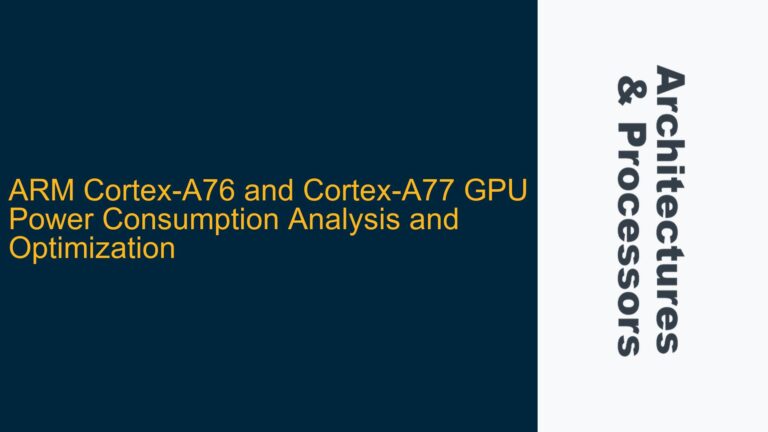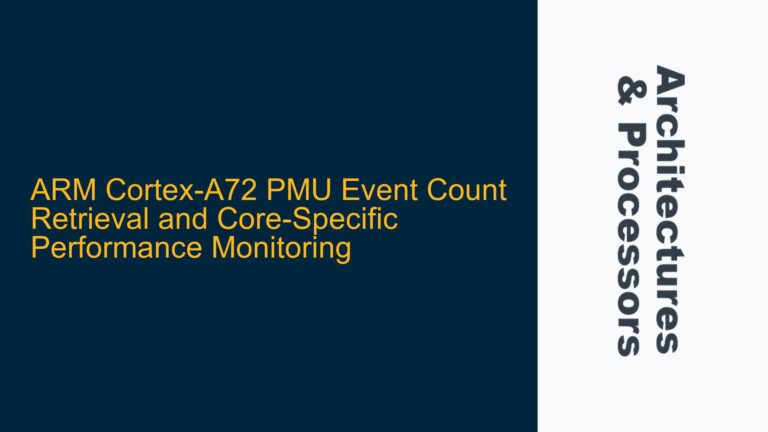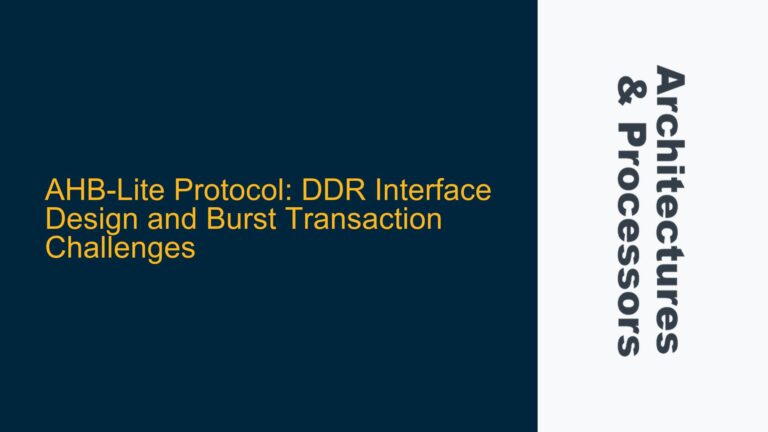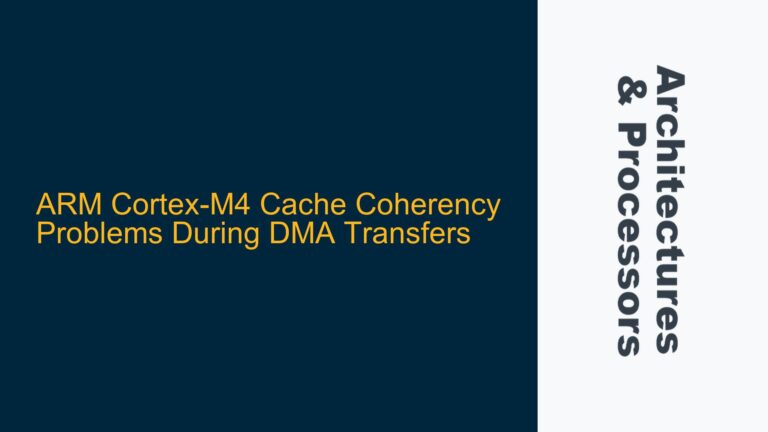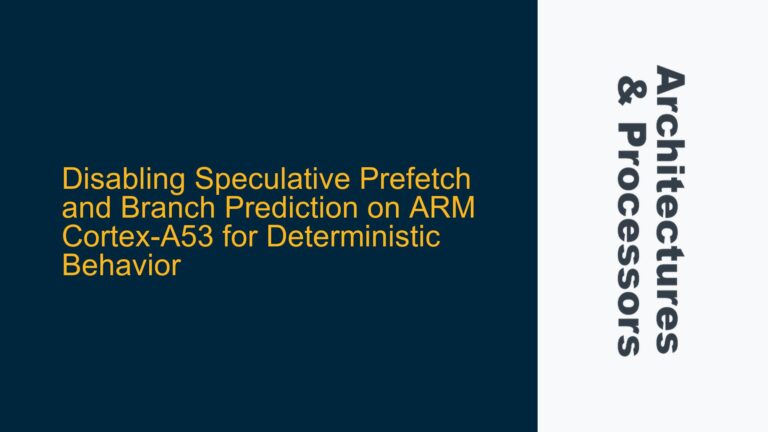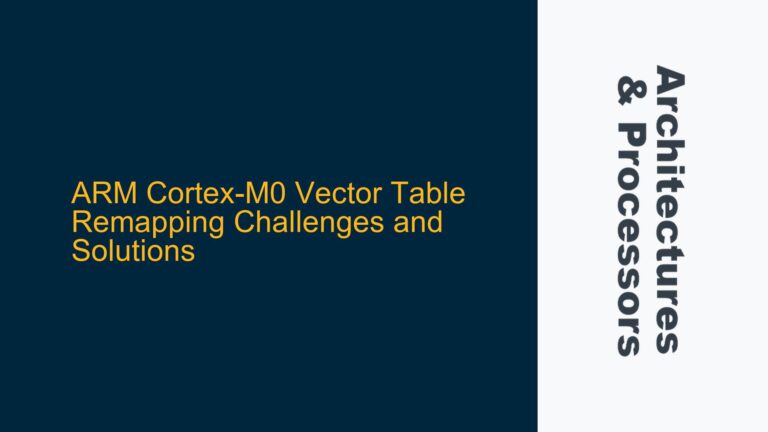ARM Cortex-R5F Return Stack Access Limitations for Call Tree Reconstruction
The ARM Cortex-R5F processor, like many ARM cores, incorporates a hardware return stack to optimize function call and return operations. This return stack is typically a small, fast memory structure embedded within the processor core, designed to store return addresses for the most recent function calls. The Cortex-R5F features a 4-entry return stack, which means it can hold up to four return addresses at any given time. The primary purpose of this stack is to reduce the latency associated with function returns by avoiding the need to access main memory for the return address.
However, the return stack is not directly accessible via standard ARM instructions or memory-mapped registers. This inaccessibility poses a significant challenge for developers who wish to inspect the return stack contents for purposes such as call tree reconstruction. The call tree, which represents the hierarchy of function calls leading up to the current execution point, is a critical piece of information for debugging, profiling, and real-time system analysis. In systems where debug symbols are not available, and where real-time constraints prevent the use of traditional stack unwinding techniques, the inability to access the return stack directly becomes a significant limitation.
The Cortex-R5F’s return stack is managed entirely by the processor hardware. When a function call is made, the return address is pushed onto the return stack. When a function returns, the processor pops the return address from the return stack and jumps to that address. This process is transparent to the software, meaning that the software has no direct control over or visibility into the return stack contents. This design is intentional, as it allows the processor to optimize function call and return operations without exposing internal state to the software.
In the context of real-time systems, where deterministic behavior and minimal overhead are critical, the inability to access the return stack directly can be particularly problematic. Real-time systems often require the ability to diagnose and respond to errors or performance issues in real-time, without the luxury of offline analysis. In such systems, the ability to reconstruct the call tree on-the-fly, without the need for debug symbols or extensive CPU resources, is highly desirable. However, the Cortex-R5F’s return stack design makes this difficult, if not impossible, to achieve directly.
Hardware-Managed Return Stack and Software Interference Risks
One of the primary reasons the Cortex-R5F’s return stack is not directly accessible is that it is a hardware-managed structure. The processor core handles all aspects of return stack management, including pushing and popping return addresses, without any software intervention. This design choice is intended to maximize performance and minimize the overhead associated with function calls and returns. However, it also means that any attempt by software to inspect or manipulate the return stack would interfere with the processor’s normal operation.
If software were able to access the return stack directly, it would likely disrupt the processor’s internal state, leading to unpredictable behavior. For example, if a software routine attempted to read the return stack while the processor was in the middle of a function call or return operation, it could cause the processor to lose track of the correct return address. This could result in incorrect program execution, crashes, or other undefined behavior. Additionally, any attempt to modify the return stack contents could lead to similar issues, as the processor would no longer have a reliable record of the function call hierarchy.
The risk of software interference is particularly acute in real-time systems, where the timing and order of operations are critical. In such systems, even a small disruption to the processor’s internal state could have significant consequences, potentially leading to missed deadlines, data corruption, or system failure. For this reason, ARM has designed the Cortex-R5F’s return stack to be entirely under hardware control, with no direct access provided to software.
Another consideration is that the return stack is a finite resource, with only four entries available on the Cortex-R5F. This limited size means that the return stack can only hold a small portion of the overall call tree at any given time. As functions are called and returned, the return stack contents are constantly changing, with older entries being overwritten by newer ones. This dynamic nature of the return stack further complicates any attempt to inspect its contents, as the information it holds is both transient and incomplete.
In summary, the Cortex-R5F’s return stack is a hardware-managed structure that is not directly accessible to software. Any attempt to inspect or manipulate the return stack would likely interfere with the processor’s normal operation, leading to unpredictable behavior. This design choice is intended to maximize performance and minimize overhead, but it also limits the ability of software to reconstruct the call tree in real-time.
Alternative Approaches for Real-Time Call Tree Analysis on Cortex-R5F
Given the limitations of the Cortex-R5F’s return stack, alternative approaches must be considered for real-time call tree analysis. One such approach is to use frame pointers, which are commonly used in other architectures such as PowerPC. Frame pointers are pointers to the base of the current stack frame, and they can be used to traverse the call stack by following the chain of frame pointers from one stack frame to the next. However, the ARM architecture does not mandate the use of frame pointers, and many ARM compilers do not generate them by default.
In the absence of frame pointers, another approach is to use the Link Register (LR) to reconstruct the call tree. The LR is a special register in the ARM architecture that holds the return address for the current function. When a function is called, the return address is stored in the LR, and when the function returns, the processor jumps to the address stored in the LR. By examining the contents of the LR, it is possible to determine the return address for the current function, and by following the chain of LR values, it is possible to reconstruct the call tree.
However, this approach has its own challenges. First, the LR is not always saved to the stack, especially in leaf functions (functions that do not call other functions). In such cases, the LR may not be available for inspection, making it difficult to reconstruct the call tree. Second, even when the LR is saved to the stack, the exact location of the saved LR within the stack frame may vary depending on the function and the compiler used. This variability makes it difficult to reliably extract the LR value from the stack without additional information about the stack frame layout.
To address these challenges, one possible solution is to modify the compiler to ensure that frame pointers are always generated and that the LR is always saved to the stack in a consistent location. This would allow the call tree to be reconstructed by following the chain of frame pointers and extracting the LR values from the stack. However, this approach requires changes to the compiler and may not be feasible in all cases, especially in systems where the compiler cannot be modified.
Another approach is to use a combination of static analysis and runtime instrumentation to reconstruct the call tree. Static analysis can be used to analyze the binary code and determine the stack frame layout for each function, including the location of the saved LR. This information can then be used at runtime to extract the LR values from the stack and reconstruct the call tree. However, this approach requires significant upfront effort to perform the static analysis and may not be suitable for all systems, especially those with complex or dynamically generated code.
In conclusion, while the Cortex-R5F’s return stack is not directly accessible for real-time call tree analysis, alternative approaches such as using frame pointers or the Link Register can be used to reconstruct the call tree. However, these approaches have their own challenges and limitations, and may require modifications to the compiler or significant upfront effort to implement. In systems where real-time call tree analysis is critical, a combination of these approaches may be necessary to achieve the desired results.

